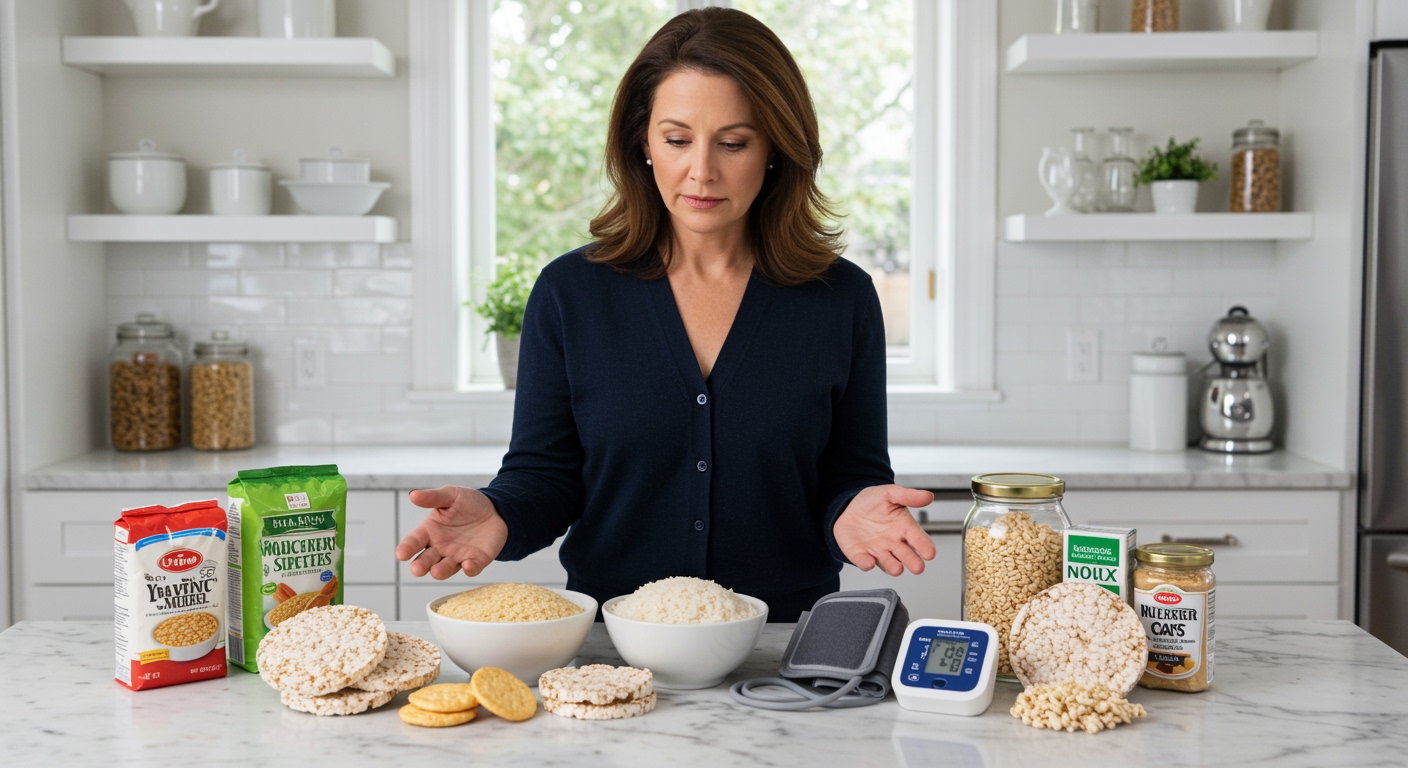✪ Key Takeaway: Brown rice and minimally processed rice products can support blood pressure management, while refined white rice products may worsen hypertension.
Introduction
Your doctor just told you to watch your blood pressure, and now you are staring at your pantry wondering about that bag of rice.
You might be asking this question because rice forms a major part of many diets worldwide, yet conflicting information about its effects on blood pressure leaves people confused about whether they should continue eating it.
Hi, I am Abdur, your nutrition coach, and today I am going to explain exactly how different rice products affect your blood pressure and which ones you should choose for better heart health.
How Does Rice Processing Affect Blood Pressure?
The way rice gets processed dramatically changes how it affects your blood pressure levels.
Brown rice keeps its fiber-rich bran layer intact, which slows down sugar absorption and prevents rapid blood sugar spikes that can stress your cardiovascular system.
White rice loses this protective layer during processing, causing it to break down quickly in your digestive system and create sudden glucose surges.
These glucose spikes trigger your body to release more insulin, which can lead to sodium retention and increased blood volume.
When your blood volume increases, your heart must work harder to pump blood through your arteries, resulting in higher blood pressure readings.
Research shows that people who eat more refined grains like white rice have a 27% higher risk of developing hypertension compared to those who choose whole grains.
✪ Fact: Brown rice contains 4 times more fiber than white rice, making it significantly better for blood pressure control.
Which Rice Products Should You Avoid?
Certain rice products can be particularly harmful for people managing high blood pressure.
Rice cakes and puffed rice cereals rank among the worst choices because the puffing process breaks down the grain structure even further, creating products with extremely high glycemic index values.
These products cause your blood sugar to spike faster than eating pure glucose, which puts tremendous stress on your cardiovascular system.
Instant rice varieties also pose problems because they undergo pre-cooking and dehydration processes that remove most beneficial nutrients while making the remaining carbohydrates more rapidly digestible.
Rice crackers and rice-based snack foods often contain added sodium, artificial flavors, and preservatives that directly contribute to blood pressure elevation.
Studies indicate that consuming these highly processed rice products more than three times per week increases your risk of developing metabolic syndrome, which includes hypertension as a key component.
✪ Pro Tip: Check sodium content on rice product labels as many contain hidden salt that can worsen blood pressure.
What Makes Brown Rice Better for Hypertension?
Brown rice offers several mechanisms that actively support blood pressure management.
The intact bran layer contains magnesium, a mineral that helps relax blood vessel walls and allows blood to flow more easily through your arteries.
This natural vasodilation effect can reduce both systolic and diastolic blood pressure readings by 2-4 mmHg on average.
Brown rice also provides potassium, which works directly against sodium by helping your kidneys excrete excess salt through urine.
The fiber content in brown rice feeds beneficial gut bacteria that produce short-chain fatty acids, compounds that have been shown to lower inflammation throughout your cardiovascular system.
Clinical trials demonstrate that people who replace white rice with brown rice experience an average blood pressure reduction of 5-7 mmHg within 8 weeks.
The antioxidants present in brown rice bran, including gamma-oryzanol and tocotrienols, protect your blood vessels from oxidative damage that can contribute to hypertension development.
✪ Note: Soaking brown rice for 2 hours before cooking increases its magnesium bioavailability by up to 30%.
How Much Rice Can You Safely Eat?
The amount of rice you can safely consume depends on your current blood pressure status and overall health condition.
For people with normal blood pressure, up to one cup of cooked brown rice per day fits well within a heart-healthy eating pattern.
Those with mild hypertension should limit themselves to half a cup of cooked brown rice every other day while focusing on other whole grains for variety.
People with severe hypertension or those taking blood pressure medications should consult their healthcare provider before including any rice products in their daily diet.
The timing of rice consumption also matters because eating it earlier in the day allows your body more time to process the carbohydrates before your natural nighttime blood pressure dip.
Combining rice with protein sources and healthy fats further slows digestion and prevents the blood sugar spikes that can temporarily raise blood pressure.
✪ Pro Tip: Eating rice with beans or lentils creates a complete protein while reducing the glycemic impact on blood pressure.
The Bottom Line
Rice products can either help or harm your blood pressure management depending on which types you choose and how much you consume.
Smart food choices today create the healthy blood pressure readings you want tomorrow, so prioritize brown rice and other whole grain options while avoiding highly processed rice products that can sabotage your cardiovascular health.
I would love to hear about your experiences with rice and blood pressure management, so please share your questions, success stories, or concerns in the comments below.
References
At NutritionCrown, we use quality and credible sources to ensure our content is accurate and trustworthy. Below are the sources referenced in creating this article:
- PMC: Whole Grains and Blood Pressure
- PMC: Rice Consumption and Metabolic Health
- Pune Cardiologist: Is Rice Good for High Blood Pressure
- Royal Society: Dietary Patterns and Cardiovascular Health





